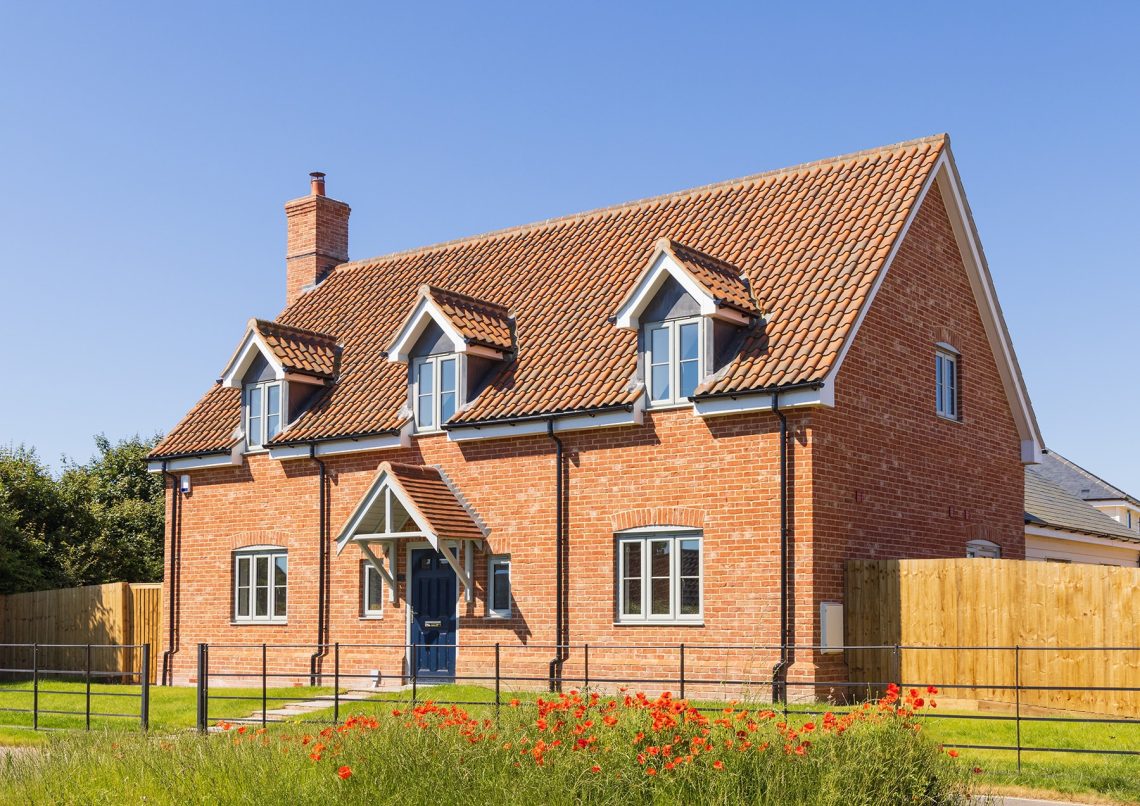When purchasing a property, something that often gets overlooked is the direction the property faces. The orientation of your property can affect many key factors such as ventilation, energy efficiency, and ‘morning sun’. However, the perfect choice for you may not be the perfect choice for the next person, so let’s take a look at some of the pros and cons for each direction so you can make an informed decision when buying your next property:
North-Facing Homes
Pros:
- Consistent Lighting: In the UK, north-facing homes have less intense sunlight, allowing for even distribution throughout the day, meaning the warmth and brightness remain soft all day.
- Perfect for Artwork & Upholstery: As mentioned earlier, sunlight can cause many items to fade – the even lighting in north-facing homes helps preserve your favourite paintings and decor.
- Cooler in Hot Climates: Because they avoid the midday sun, north-facing homes are often cooler and more comfortable throughout the summer, reducing the requirement for cooling appliances.
Cons:
- Lack of Warmth and Sunlight: For all the benefits this has in the summer, it has the opposite effect in the winter. Your home will feel darker and cooler, meaning you may need to utilise your heating and lighting throughout the day.
- Potential for Dampness: Less sunlight can lead to some negative outcomes – when there isn’t enough sunlight, moisture can occur, leading to possible damp and mould.
- Depressed Mood: The sun naturally improves our mood, so the lack of sunlight can lead to you feeling a little low, sad, or lethargic.
South-Facing Homes
Pros:
- Plenty of Natural Light: In the UK, south-facing homes are often popular because they receive the most natural light throughout the day. This is also true through the winter months due to the sun being lower in the sky.
- Energy Efficient: Important for most – south-facing homes are ideal for generating energy from solar panels and allow for passive solar heating in the colder months, reducing heating costs.
- Great for Warmth: Throughout the day, sunlight comes in through windows and helps keep the house at a comfortable temperature. This reduces the need for radiators and heaters, making it an eco-friendly choice.
Cons:
- Excessive Heat in Summer: Although warmer in the winter, they have the opposite effect in the summer – with the sun shining in all day, you may need to utilise blinds and spend on cooling appliances to keep your home cool.
- Window Glare: The glare can interfere with everyday activities, such as watching TV, working (or playing) on a computer, or reading. Blinds or UV-blocking window films can help but reduce the natural light.
- Furniture Fading: The constant sunlight can cause pictures, carpets, and furniture to fade, meaning more upkeep costs.
East-Facing Homes
Pros:
- Morning Light and Air: Perfect for the early birds – the sunlight will sneak through your windows early, and the cool morning air is often fresher, making for the perfect start to the day.
- Health Benefits: Experts believe the morning sun can help improve mood, sleep, and Vitamin D levels – ideal for those with seasonal mood disorders and looking for a mental boost.
- Ideal for Gardens: Those with green fingers may opt for an east-facing home because the sunlight is less harsh at peak times, allowing plants to thrive while still benefitting from the early morning sun.
Cons:
- Limited Afternoon Sun: If you like relaxing in the afternoon sun, east-facing may not be for you. The sunlight arrives early but also leaves early, especially in the cooler months.
- Higher Heating Costs in Winter: Due to most of the sunlight shining through in the morning, as the day moves to the afternoon your interiors will be cooler, leading to higher heating costs.
West-Facing Homes
Pros:
- Warm Evening Sun: Perfect for those who like to relax in their garden. The setting sun provides a warming glow and a pleasant atmosphere.
- Great for Entertaining: If you like to host friends outdoors, the late light and warmer temperatures make west-facing homes ideal for barbecues and dinners.
- Cooler Morning Temperatures: With no direct sunlight in the morning, west-facing homes feel cooler, leading to a comfortable start to the day.
Cons:
- Intense Heat in the Afternoon: Cooler mornings often mean hot afternoons. This can lead to extra cooling costs to stop your home feeling uncomfortably warm.
- Fading Furniture and Fabrics: Similar to south-facing, the strong sun through the windows can cause pictures, carpets, and furniture to fade, meaning more expense when needing to replace them.
Finally, how can you decide which direction is best for you?
We hope this blog post has helped inform you about some of the pros and cons of each orientation, but we also recommend timing your ‘viewings’ with this information to hand. Visiting between 10am – 11am or 2pm – 3pm helps you see the property during its ‘worst’ times. For example, this gives you the opportunity to observe bedroom locations and garden positions.
At the end of the day, the best-facing direction for your home is a personal choice. Think about what is important to you and determine which orientation you’d like to go for (and don’t forget the views).

